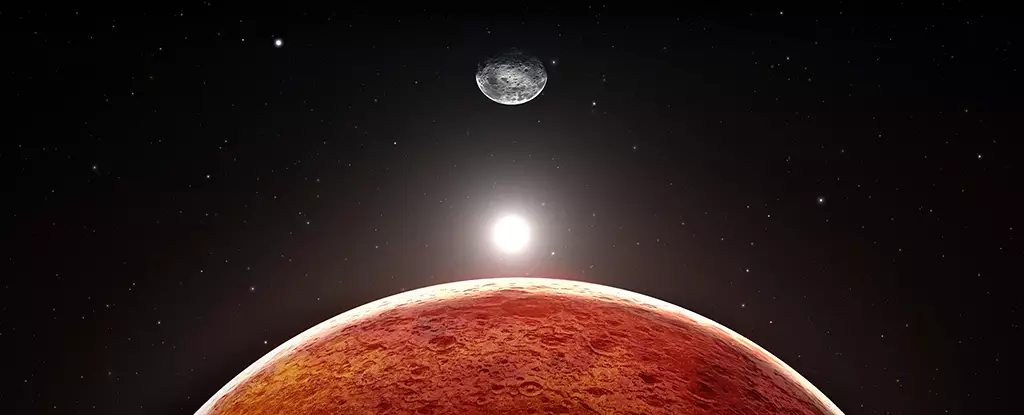The allure of Mars has captivated scientists and space enthusiasts alike for centuries. Known for its red hue and intriguing topography, researchers continuously seek to unravel the mysteries concealed within its rocky surface. One compelling theory that recently emerged suggests that a long-lost moon might hold the key to understanding Mars’s peculiar shape and geological features. This idea, proposed by astronomer Michael Efroimsky from the US Naval Observatory, has initiated discussions about the celestial history of Mars and its relationship with other bodies in our Solar System.
Mars is unlike any other planet within our celestial neighborhood. Its distinctly triaxial shape—a kind of ellipsoid—with notable variances along its three axes has left its geometric integrity in a state of puzzlement for many researchers. This unusual morphology could indicate a violent past, reflecting how a massive moon potentially influenced its gravitational dynamics. The adaptation of Mars into this triaxial formation may have resulted from the gravitational forces exerted by a lost moon, which Efroimsky names Nerio, a nod to ancient martial deities once venerated on the planet.
The concept posits that Nerio, possibly one-third the size of our Moon, could have exerted significant tidal forces on early Mars when it was still malleable, pulling at molten magma beneath the surface. Such gravitational interactions could have led to the planet’s current shape—a testament to the forces of physics that govern celestial bodies.
The Fate of Nerio: A Moon’s Tragic End?
The narrative surrounding Nerio extends beyond mere speculation about its existence. Efroimsky’s hypothesis includes the idea that Mars’s present moons, Phobos and Deimos, may be vestiges of Nerio, perhaps cleaved apart during a tumultuous epoch known as the Late Heavy Bombardment. This cataclysmic event—roughly four billion years ago—could have impacted Mars profoundly, leaving traces of its once-mighty companion scattered across the Martian sky.
The remnants of Nerio, should it have existed, would present a fascinating paradox. They form a narrative suggesting that celestial mechanics can lead to unpredictable outcomes, and the death of one planetary body can give birth to another. The expected debris from such an impactful history could significantly alter the surface characteristics of Mars, revealing information about its geological processes.
The Geological Implications of a Lost Moon
One of the most salient points in Efroimsky’s theory is its potential to elucidate the enigmatic geological features that define Mars. The planet hosts the largest volcano in the Solar System, Olympus Mons, alongside the immense canyon Valles Marineris and the highlands of Tharsis. According to this theory, the significant volcanic and tectonic activities observed today could be remnants of ancient interactions with Nerio.
The gravitational tug-of-war between Mars and its hypothesized moon may have catalyzed various geological processes, including mantle convection beneath the crust. The model asserts that regions subjected to tidal forces would have become more susceptible to volcanic and tectonic upheaval, contributing to the pronounced topography we observe now. This correlation would not only enhance our understanding of the mechanical processes shaping Mars but could also reshape our theories about planetary evolution.
Despite the imaginative foundations of Efroimsky’s theory, it is crucial to acknowledge its speculative nature. Many questions linger about the absence of direct evidence supporting the existence of a moon like Nerio. Without physical remnants or clear indicators of such a moon’s collision with Mars, scientists are left in murky depths of conjecture.
Future research and explorations will be pivotal in elucidating these mysteries. Sophisticated missions targeted at Mars could yield data that either substantiates or dismantles this hypothesis. Even if the moon never existed or is wholly lost to time, the exploration of Mars continues to foster intrigue about how its current characteristics came to be.
The exploration of whether a long-lost moon like Nerio could explain the unusual shape of Mars holds significant implications for our understanding of both the Red Planet and celestial body interactions within our Solar System. As Mars endures continued study, it is critical to approach such theories with both curiosity and a critical mindset, ever seeking the truths hidden beneath its dusty surface.


Leave a Reply